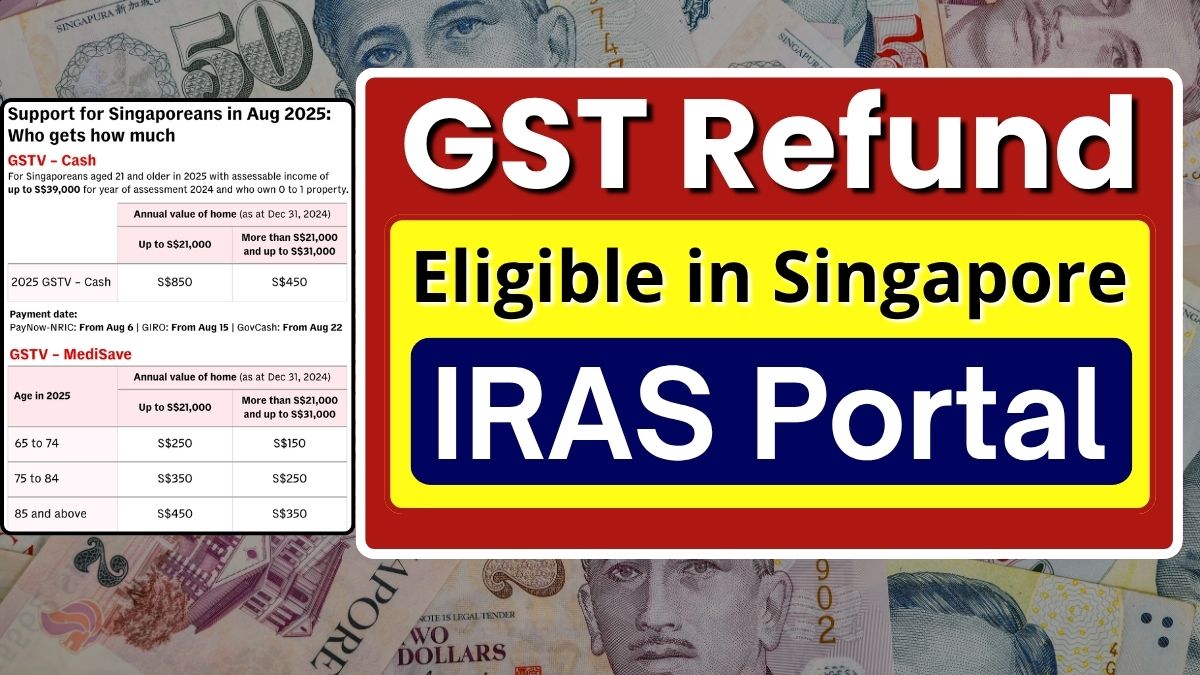If you run a business in Singapore, you already know how every percentage point matters. At 9%, the Goods and Services Tax (GST) can feel like a heavy burden — especially when you’re constantly paying it on supplies, imports, and services.
But here’s something many business owners don’t realise: you can actually get that money back. Yes — Singapore’s tax system allows eligible businesses to claim GST refunds on their business expenses. Understanding how it works could save your company thousands of dollars every year.
Let’s break it down in plain English.
What Exactly Is a GST Refund?
Think of GST as a “flow-through” tax. Businesses collect GST from their customers (that’s called output tax) and also pay GST on their own purchases (input tax). When you file your GST return, you compare the two:
- If you’ve collected more GST than you paid → you pay the difference to IRAS.
- If you’ve paid more GST than you collected → you’re entitled to a refund.
That’s your GST refund — money the government owes back to your business.
Who’s Eligible for a GST Refund in Singapore?
To claim a GST refund, your company must be GST-registered and use the goods or services for business purposes. Refunds usually apply when:
- You’ve overpaid GST by mistake or through clerical errors.
- You’ve paid GST on imports that were later exported.
- You’ve written off a bad debt where the customer didn’t pay.
If your input tax is higher than your output tax for the quarter, IRAS typically issues a refund within three months after filing your GST return.
Key GST Schemes Every Business Should Know
Singapore offers special schemes to make GST management easier:
- Import GST Deferment Scheme (IGDS): Lets you postpone GST payments on imports until you file your GST return.
- Major Exporter Scheme (MES): Suspends GST at import points for companies that export most of their goods.
- Zero GST Warehouse Scheme: Keeps GST suspended as long as imported goods stay in the warehouse.
These schemes help businesses maintain cash flow and reduce short-term financial strain.
Avoiding Common GST Refund Mistakes
The biggest reason refunds get delayed or rejected? Poor record-keeping.
To stay compliant and efficient:
- Keep all tax invoices and import permits for at least five years.
- Use accounting software like Xero or QuickBooks to automate GST tracking.
- Double-check claim amounts and submit your Life Certificate equivalents (returns) on time.
And remember — any false or careless GST claims can trigger audits and penalties. IRAS can charge up to 200% of the tax underpaid, so accuracy matters.
Why This Matters for Your Business
Getting your GST refund right isn’t just about saving money — it’s about keeping your business compliant, cash-positive, and stress-free. When you manage GST smartly, you’re effectively improving your working capital, reducing tax risk, and showing financial discipline — all qualities that make investors and partners trust your business more.
So the next time you’re preparing your quarterly GST return, take a closer look — there might be money waiting for you to claim.
Frequently Asked Questions
1. Who can claim a GST refund in Singapore?
Only GST-registered businesses can claim refunds for input tax paid on business-related goods or services.
2. How long does IRAS take to process a GST refund?
Typically, within three months of submitting a complete and accurate GST F5 return.
3. What happens if a GST refund claim is filed incorrectly?
Incorrect claims can lead to penalties of up to 200% of the tax underpaid or, in serious cases, prosecution for tax evasion.
